#stanislaus national forest
Explore tagged Tumblr posts
Text

Day 1 of backpacking through Stanislaus National Forest.
California
1981
#vintage camping#campfire light#california#stanislaus national forest#backpacking#hiking#history#camping#friends#exploring#1980s
89 notes
·
View notes
Text

44 notes
·
View notes
Text


Have a sign from Grand Marais, MI that’s haunted me since childhood
41K notes
·
View notes
Text

Had the most magical time with my pup Callie in Stanislaus National Forest a couple of weeks ago. Never seen snow glitter quite like this!!
186 notes
·
View notes
Text

Yosemite National Park, California, United States: Yosemite National Park is a national park in California. It is bordered on the southeast by Sierra National Forest and on the northwest by Stanislaus National Forest. The park is managed by the National Park Service and covers 759,620 acres in four counties – centered in Tuolumne and Mariposa, extending north and east to Mono and south to Madera. Designated a World Heritage Site in 1984, Yosemite is internationally recognized for its granite cliffs, waterfalls, clear streams, giant sequoia groves, lakes, mountains, meadows, glaciers, and biological diversity. Wikipedia
92 notes
·
View notes
Text

Yosemite National Park, California, United States: Yosemite National Park is a national park in California. It is bordered on the southeast by Sierra National Forest and on the northwest by Stanislaus National Forest. The park is managed by the National Park Service and covers 759,620 acres in four counties – centered in Tuolumne and Mariposa, extending north and east to Mono and south to Madera. Wikipedia
#Yosemite National Park#California#United States#world heritage site#north american continent#north america
140 notes
·
View notes
Text
Abbattere e seppellire alberi per fermare il cambiamento climatico: l’idea di una startup sostenuta da Bill Gates
Un anno fa Merritt Jenkins si è trasferito da Boston a Twain Harte, in California, ai piedi della Sierra Nevada. Un mattiino si dirige verso un bosco di dieci acri nella Stanislaus National Forest. Qui la sua startup, Kodama Systems, sta perfezionando la sua macchina per la raccolta del legname, che pesa 17 tonnellate ed è lunga 7metri e mezzo. I taglialegna usano macchine del genere, per prendere tonnellate di alberi tagliati e detriti e trascinarle fuori dal bosco. La versione di Kodama è progettata per svolgere questo compito anche di notte, con meno persone, grazie a connessioni satellitari e camere avanzate a lidar (light detection and raging), le stesse utilizzate sulle auto a guida autonoma, per monitorare il lavoro da remoto. Non è facile. “Gli alberi hanno molte texture diverse”, dice Jenkins, 35 anni. “Ogni 3 metri il cammino è leggermente diverso”. Ma tagliare legna nell’oscurità non è la parte più intrigante dei programmi di Kodama, che ha raccolto 6,6 milioni di $ di finanziamenti dalla Breakthrough Energy di Bill Gates e da altri. Dopo avere tagliato gli alberi, Jenkins vuole seppellirli per contribuire a rallentare il cambiamento climatico e raccogliere compensazioni di carbonio che potrà poi vendere (e forse, un giorno, anche crediti d’imposta). L'idea è quella di piantare alberi per assorbire la CO2 dall’aria e poi vendere i crediti alle aziende, ai proprietari di jet privati o a chiunque altro abbia bisogno o voglia compensare le sue emissioni. Gli scienziati, però, sostengono che anche seppellirli possa ridurre il riscaldamento globale. Soprattutto nel caso di alberi che finirebbero altrimenti per bruciare o decomporsi, disperdendo nell’aria il carbonio che hanno immagazzinato. I giganteschi incendi divampati in California nel 2020 hanno evidenziato i rischi per l’aria, le proprietà e la vita posti dalle foreste troppo estese. “I cieli arancioni di San Francisco hanno rappresentato un punto di svolta”, afferma Jimmy Voorhis, head of biomass utilization and policy di Kodama. “Ora queste storie hanno un’eco diversa. L’allarme suona ancora più forte quest’anno, dopo che gli incendi in Canada hanno messo a rischio l’aria di New York, Washington e Chicago. Per affrontare il problema, lo Us Forest Service intende tagliare 70 milioni di acri delle foreste occidentali, soprattutto in California, nei prossimi 10 anni. In questo modo estrarrà più di un miliardo di tonnellate di biomassa secca. È consuetudine, dopo un disboscamento del genere, che i tronchi di dimensioni tali da essere di interesse commerciale finiscano alle segherie, mentre il resto viene in gran parte accatastato e bruciato in condizioni controllate. Kodama, invece, vuole seppellire gli avanzi in vasche di terra progettate per mantenere condizioni asciutte e senza ossigeno e proteggere il legno dalla putrefazione o dalla combustione. Oltre ai fondi raccolti da venture capital, Kodama ha già ricevuto sovvenzioni per 1,1 milioni di dollari dall’agenzia californiana che si occupa degli incendi boschivi. Altri si sono già impegnati ad acquistare i crediti di carbonio legati alle prime 400 tonnellate di alberi seppellite. Sul mercato, quei crediti dovrebbero fruttare 200 $ a tonnellata. Kodama conta di arrivare ad abbattere e seppellire più di 5000 tonnellate di alberi all’anno. L’idea di seppellire gli alberi sembra semplice e poco tecnologica, soprattutto se paragonata alle complesse tecnologie per la cattura del carbonio che vengono sviluppate per estrarre la CO2 dall’aria. Grazie all’Inflation Reduction Act approvato dai DEM nel 2022, società come Occidental Petroleum ed ExxonMobil potrebbero beneficiare di 85 $ di crediti d’imposta per ogni tonnellata di CO2 se riusciranno a perfezionare i sistemi per aspirare il gas direttamente dall’aria e trasferirlo tramite condutture, per poi iniettarlo nel sottosuolo. La legge incentiva alcuni di questi progetti con crediti d’imposta pari al 30% o più del capitale iniziale investito.
https://forbes.it/2023/08/04/kodama-systems-startup-abbatte-alberi-salvare-clima/
Non ho parole per commentare, se non che basta piantare nuovi alberi. Ma evidente non rende così tanto
https://www.science.org/doi/10.1126/science.aax0848
54 notes
·
View notes
Text




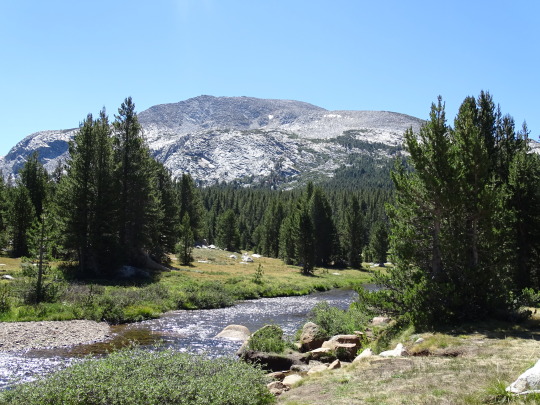
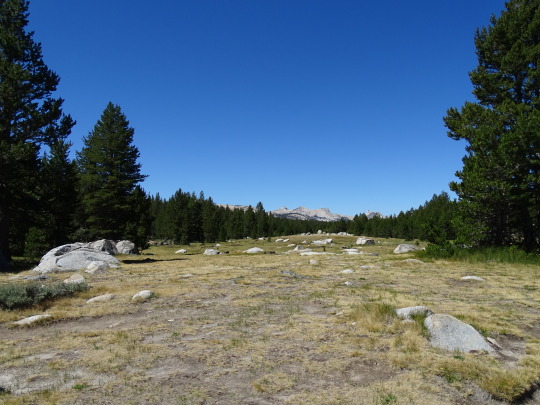

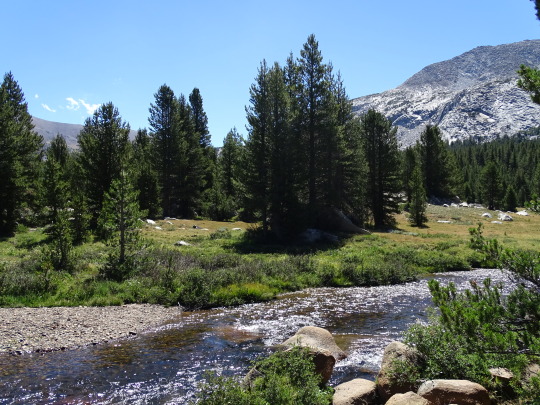

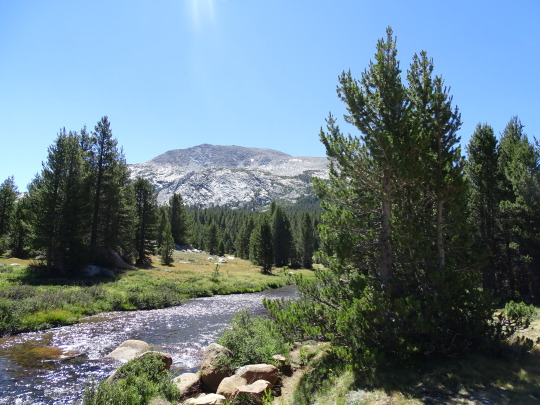
Yosemite National Park, CA (No. 2)
Yosemite National Park is a national park in California. It is bordered on the southeast by Sierra National Forest and on the northwest by Stanislaus National Forest. The park is managed by the National Park Service and covers 759,620 acres (1,187 sq mi; 3,074 km2) in four counties – centered in Tuolumne and Mariposa, extending north and east to Mono and south to Madera. Designated a World Heritage Site in 1984, Yosemite is internationally recognized for its granite cliffs, waterfalls, clear streams, giant sequoia groves, lakes, mountains, meadows, glaciers, and biological diversity. Almost 95 percent of the park is designated wilderness. Yosemite is one of the largest and least fragmented habitat blocks in the Sierra Nevada.
Its geology is characterized by granite and remnants of older rock. About 10 million years ago, the Sierra Nevada was uplifted and tilted to form its unique slopes, which increased the steepness of stream and river beds, forming deep, narrow canyons. About one million years ago glaciers formed at higher elevations. They moved downslope, cutting and sculpting the U-shaped Yosemite Valley.
Source: Wikipedia
#Dana Lake#Mount Dana#Mount Gibbs#Yosemite National Park#Sierra Nevada#Mono County#geology#flora#California#summer 2022#tourist attraction#landmark#landscape#countryside#USA#nature#forest#woods#fir#pine#rocks#travel#original photography#vacation#alpine meadow#creek
10 notes
·
View notes
Video
Red-breasted Sapsucker by Lisa Roeder Via Flickr: Spotted at a distance, this guy's red sure caught my eye in the dark shadows of the forest. Stanislaus National Forest, CA.
2 notes
·
View notes
Text

➤ Yosemite National Park (/joʊˈsɛmɪti/ yoh-SEM-ih-tee) is an American national park in California, surrounded on the southeast by Sierra National Forest and on the northwest by Stanislaus National Forest. The park is managed by the National Park Service and covers an area of 759,620 acres (1,187 sq mi; 3,074 km2) in four counties – centered in Tuolumne and Mariposa, extending north and east to Mono and south to Madera County. Designated a World Heritage Site in 1984, Yosemite is internationally recognized for its cliffs, waterfalls, clear streams, giant sequoia groves, lakes, mountains, meadows, glaciers, and biological diversity. Almost 95 percent of the park is designated wilderness. Yosemite is one of the largest and least fragmented habitat blocks in the Sierra Nevada, and the park supports a diversity of plants and animals.
📷@v_outdoors
52 notes
·
View notes
Photo
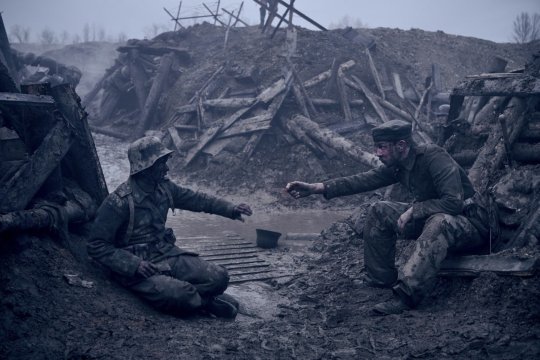
All Quiet on the Western Front (2022, Germany)
As a film buff, I retain a preference to reading a book first before seeing its adaptation. But with how many movies I see in a year – sometimes not realizing that a movie is a literary adaptation before starting it – and given how many original source materials are out-of-print or little-read (let alone how slow a reader I am), this is often too difficult a proposition. I make an attempt, however possible, to learn about the themes of an adapted book I was not able to read before heading into a film write-up. Strict fidelity to the text is not a requirement; yet a film adaptation should adhere to the spirit of the text. Any significant changes to that requires the change be done with artistic intelligence and sensitivity. Especially when the adapted book in question is significant in a peoples’ or a nation’s consciousness. Published in 1929, All Quiet on the Western Front by Erich Maria Remarque is a landmark novel in anti-war literature and remains – for its depiction of World War I on the bodies and minds of the young men sent to fight it – an important part of modern Germany’s sociopolitical identity.
Lewis Milestone’s 1930 film adaptation at Universal with Lew Ayres was the first cinematic masterpiece following the introduction of synchronized sound and the era of the silent film. Now steps in Edward Berger’s German-language adaptation for Netflix, starring Felix Kammerer, in hopes of reminding viewers that Im Westen nichts Neues (roughly “Nothing New in the West”) is, despite its universal appeal, fundamentally a German story. Berger’s All Quiet is a stupendous technical masterpiece – harrowing visual and sound effects, overflowing with blood and mud. It is among the most technically accomplished war movies this side of Saving Private Ryan (1998). Along the way, Berger’s All Quiet tries for too much, and betrays the characterizations and the intent of Remarque’s novel. With some of its violent scenes shot too aesthetically pleasing alongside an offensive and disrespectful electronic score, 2022’s All Quiet casts the French civilians and soldiers as “the enemy” rather than fellow victims. It veers perilously close to fetishizing the violence within.
Before a brief synopsis, it seems appropriate to reproduce Remarque’s epigraph to All Quiet on the Western Front here:
This book is to be neither an accusation nor a confession, and least of all an adventure, for death is not an adventure to those who stand face to face with it. It will try simply to tell of a generation of men who, even though they may have escaped shells, were destroyed by the war.
It is 1917, and the Great War has been plodding along for three years. Along with his friends Ludwig Behm (Adrian Grünewald), Albert Kropp (Aaron Hilmer), and Franz Müller (Koritz Klaus), student Paul Bäumer (Kammerer) enlists in the Imperial German Army. They all receive uniforms that, unbeknownst to them, belonged to German soldiers killed in action. Skipping almost entirely over basic training, Paul and his friends deploy to the Western Front, on the French side of the Belgium/France border. There, they befriend Stanislaus “Kat” Katczinsky (Albrecht Schuch) and Tjaden Stackfleet (Edin Hasanovic), who are several years older and have been fighting since close to the war’s beginning. These young men muddle on in drenched trenches, freezing weather, and their comrades’ horrific deaths. Parallel to the plight of Paul and his fellow soldiers is German politician Matthias Erzberger (Daniel Brühl), who secretly travels by train to the Forest of Compiègne to negotiate with French General Ferdinand Foch (Thibault de Montalembert) an armistice.
Also featuring in this film are Devid Striesow as the so-villainous-he-must-be-a-moustache-twirler General Friedrichs, as well as Andreas Döhler and Sebastian Hülk as two German officers.
This All Quiet on the Western Front occasionally frames its violent scenes as too painterly, the combat infrequently choreographed too closely to action movies (e.g., 2017’s Dunkirk is sometimes more of a suspense movie than it is a war movie and Sam Mendes’ 1917 from 2019 is an aesthetic challenge and action movie first, war film second). The opening moments are a dolly shot that linger over a patchwork of corpses strewn about No Man’s Land, with the dull rattle of machine gun fire occasionally disturbing the soil. There is an almost gawking approach to how cinematographer James Friend hovers over the bodies. One character’s death is shrouded in a blinding angelic light – applying too picturesque a technique for a non-fantastical moment. Some exceptions to this voyeuristic, perhaps fetishistic approach to framing warfare appears, including the frightening emergence of French tanks through a cloud of gas. Berger succeeds in displaying war for all its brutality. The film’s sheen, however, comes off as too aggressive and its camerawork reflecting a Netflix-esque polish.
The most glaring misstep from the screenplay by Berger, Ian Stokell, and Lesley Paterson is to include any perspectives not involving Paul and his most immediate comrades. Depicting the insights of Erzberger, Foch, and the fictional General Friedrichs removes one of the central pillars of why All Quiet on the Western Front was such a revolutionary piece of literature. Remarque’s novel, at a time when “anti-war” narrative art was in its infancy, was one of the first war narratives that concentrated entirely on common soldiers – not the officers that commanded them or the politicians that guided them.
Before focusing on Paul and his friends, let us get the officers and politicians out of the way first. The insertion of the armistice negotiations and Gen. Friedrichs’ beliefs over politicians selling the Germany army out – more on this fiction shortly – stunts Paul and his friends’ respective character growths. And despite a decent performance from Brühl, these scenes (except for the final time the elite appear) play out repetitively: Erzberger pleads to Foch for a ceasefire, Foch demands a conditional surrender that will heavily punish Germany, and Erzberger mulls over the terms of surrender. This is all distracting from the common soldiers’ experiences, and provides as much cinematic or educational value as an amateur historical reenactment.
Berger’s stated justification for including these scenes – and letting them drag on too long in the film’s second half – is reasonable. Over the last decade, the actions of far right political groups in Germany have become more visible. These contemporary groups espouse the myths that some in 1920s and ‘30s Germany used to justify the nation’s actions leading up to World War II – all which monolithized and exploited German WWI trauma to serve repugnant purposes. The emotional imbalance of the Erzberger*/Foch scenes paints France and the Allies as an unforgiving “other”, as well as the war’s eventual “victors” (the Allies did prevail in WWI, but Remarque sees no winners in warfare). For a work never meant to be an accusation and written in between the World Wars, the proto-fascist Gen. Friedrichs spits out an early form of the stab-in-the-back conspiracy theory‡. His behavior and appearance, eerily reminiscent of Allied propaganda of Germans as “the Hun”, casts him as the film’s obvious villain. These decisions all provide Berger’s All Quiet with a juxtaposition of morality more appropriate in a WWII movie than one for the Great War.
Beyond the implications of historical morality, Berger, Stokell, and Paterson’s screenplay undermines, at almost every juncture, Remarque’s critiques of the nationalism that began World War I. The decision to have Paul and his friends join the military in 1917 rather than 1914 (as it is in the book) makes it more difficult to have Paul and his friends to have conversations about the nature and the origins of this war. Instead, the screenplay keeps such dialogue to a minimum. As a result, Berger relies on cinematographer James Friend (in his first motion picture of note) to show us close-ups of Paul’s face to reveal his thoughts. In his film debut, Felix Kammerer is doing all he can with his facial and physical acting, but after a certain point this take on Paul results in him being an empty vessel.
Indeed, in Remarque’s book, Paul Bäumer is very much a reactive rather than proactive character. But that does not mean he is without deep introspection, as he is in this 2022 adaptation. Rather than someone who slowly realizes the nationalistic folly of WWI (“We loved our country as much as they; we went courageously into every action; but also we distinguished the false from true, we had suddenly learned to see.”), muses on how wars begin, and is anything but resigned to war’s inevitability, Kammerer’s Paul emotes and says nothing about these aspects of the war. Any critique from nationalism comes not from Paul in this adaptation, but from Gen. Friedrichs’ cartoonishly villainous behavior and Paul’s teachers in the film’s opening minutes. Paul and his friends are no battlefield geniuses, nor are they intellectuals. But the monotony of war – in the absence and presence of violence – grants them knowledge no classroom can give, wisdom that no elder can impart.
Berger, Stokell, and Paterson have the gall to delete entirely arguably the most critical passage in the book: Paul’s return home after being granted time for rest and recreation. After a lengthy spell fighting in the trenches, Paul’s leave completes his development as a naïve and adventure-seeking student to a detached, disillusioned man. Nationalism manipulates his father and others – mostly older men – into believing the justness of the conflict, that serving one’s country in warfare is glorious.
By contrast, Lewis Milestone’s 1930 adaptation takes Paul’s reunion with his teacher a step further than the book. In that version, instead of a chance encounter at a parade ground, Paul visits his teacher during class, with his newest students a rapt audience. The scene that follows is not subtle. But in the context of Milestone’s adaptation, the film earns it. As Paul, Lew Ayres refuses to gift his former teacher the heroic narrative he requests – paraphrasing Horace, decrying nationalism, and simply stating: “We try not to be killed; sometimes we are. That’s all.” One figures these are the words, delivered in sullen fury, by WWI’s veterans. Berger’s adaptation again leans too heavily on Kammerer to relate any semblance of the above ideas. There is no analogue scene to juxtapose the behavioral and psychological differences between battlefront and homefront, no character or even a faraway figure for Paul to verbally challenge. Kammerer’s Paul does undergo a behavioral and cognitive shift by the conclusion of 2022’s All Quiet. Yet, his transformation is not nearly as dramatic as the narrative needs it to be. These failures all stem from a screenplay that might as well have been titled something else. It is damningly incurious about Paul and his friends.
Major movie studio film scores are moving in a particular direction: amelodic, electronic, experimental, metallic, and minimalistic. It seems, by how awards voting bodies and audiences are reacting to such music, what I am about to write paints me more of an outlier than ever.
Composer Volker Bertelmann (also known as his stage name Hauschka; 2016’s Lion) concocts an anachronistic score that includes all these elements. Devoid entirely of recognizable melody (droning strings), Bertelmann’s score has one repetitive three-note idea – I refuse to call this a motif, as it lacks any sense of development from its first to final appearances – that damages and dominates the movie. Inserted in strangely timed moments and meant to intensify dread, Bertelmann’s idea begins from the root note (B♭), up a minor third (D♭), then descends a minor sixth (F). Bertelmann plays these three notes fortissimo, with synthesizer mimicking blaring brass – trust me, you know the sound and you may know its worst practitioners. When recurring underneath the strings, the idea modulates. Memorable as it may be, this metallic sound is more appropriate for hyping young men before a battle or at a rave rather than suggesting dread. Even worse: this is disruptive music. There is a healthy balance to when music should or should not accompany the imagery onscreen. One should notice music in a movie, and it should empower – but not completely overshadow – the emotions and ideas in respect to a certain scene. Bertelmann’s interruptions appear mostly in calms before the proverbial storms. These are the moments the characters and the audience should collect themselves before the killing restarts. Thus, his three-note idea abuses and instantly overstays its welcome.
Is there a place for such colorless, obnoxious, and offensively manipulative music in film? Certainly. Just not in anything entitled All Quiet on the Western Front.
On its surface, a German-language film adaptation of All Quiet on the Western Front would restore a cultural and linguistic authenticity to Remarque’s text, one of the most important literary works in German history. To some extent, Berger succeeds. His All Quiet is a technical wonder, but its human interest is nil. Remarque’s prose is not the most accomplished, but his subjective descriptions of trench warfare and his characters’ philosophizing in moments of boredom and quiet were unlike anything almost any Western reader ever encountered. We, the readers, grow alongside Paul and his friends. In 1930, the viewers saw a small group of friends – Milestone’s adaptation is unique in that Paul does not truly emerge as the main character until halfway through the film – see their youth and optimism pummeled away with each shelling and charge. A humanity remains, but tenuously. Berger’s adaptation treads an easier path by inserting a reenactment of the armistice negotiations and expediting Paul’s characterization by immediately dismantling his inwardness and sense of hope.
As a document of a generation’s experiences, a critique of that era’s nationalism that led to the conflict, and a common soldier’s processing of the war’s origin and purpose, this is a poor adaptation of Remarque’s novel. It clears the hurdle in anti-war narratives by decrying warfare as ugly. Beyond this basic expectation, it accomplishes little else.
My rating: 6/10
* Erzberger was assassinated by the far-right terrorist organization Organisation Consul (OC) in 1921. The group was disbanded the year after, but its former members were absorbed into the Nazi Party’s Schutzstaffel (SS).
‡ This conspiracy theory was primarily associated with Jews, but the Nazis also extended it to the political elite that negotiated the surrender. And as if it weren’t obvious enough, one of our German characters is stabbed in the back in the film’s concluding minutes.
For more of my reviews tagged “My Movie Odyssey”, check out the tag of the same name on my blog.
#All Quiet on the Western Front#Im Westen nichts Neues#Edward Berger#Felix Kammerer#Albrecht Schuch#Daniel Brühl#Aaron Hilmer#Moritz Klaus#Adrian Grünewald#Edin Hasanovic#Thibault de Montalembert#Devid Striesow#James Friend#Sven Budelmann#Volker Bertelmann#Hauschka#Lesley Paterson#Ian Stokell#Netflix#My Movie Odyssey
33 notes
·
View notes
Text
Road Blog: Up Toward Yosemite, Rim Fire Aftermath and Bonus Comet
Along the road to Hetch Hetchy, snags still stand eleven years after the Rim Fire swept through Stanislaus National Forest and parts of Yosemite National Park. To keep it short and sweet: We’re taking a quick trip over to the Eastern Sierra. The past few years, this has involved a drive from Berkeley and a sunset stop along the road near Tioga Pass. This time we splurged and stopped at one of…

View On WordPress
0 notes
Text

#photo#plants#flowers#native plants#wildflowers#stanislaus national forest#too many beautiful things
13 notes
·
View notes
Text
Discovering the Hidden Treasures of Turlock, California
Discovering the Hidden Treasures of Turlock, California
Nestled in the heart of California's Central Valley, Turlock is a charming city that often surprises visitors with its rich history, vibrant community, and diverse array of activities. Whether you're a local resident looking for new adventures or a traveler passing through, Turlock offers a unique blend of attractions that cater to various interests. Here's a curated list of the best things to do in Turlock, ensuring you make the most of your visit to this delightful city.
Uncover the Fertile Roots of Farming History
Known as the "Heart of the Valley," Turlock has deep roots in agriculture. A visit to the Stanislaus County Fairgrounds provides insight into this heritage through various events and exhibitions. The Turlock Historical Society Museum is another must-visit, offering a glimpse into the city's past through exhibits and artifacts that showcase its evolution from a small farming community to a thriving city.
Explore Downtown Turlock
Downtown Turlock is the bustling hub of the city, brimming with locally-owned shops, restaurants, and cultural experiences. Start your exploration at Central Park, where you can relax amid lush greenery and perhaps catch a local event or farmers' market. Don't miss Main Street, lined with unique boutiques, art galleries, and eateries serving everything from gourmet cuisine to casual bites.
Discover the Joy of Nature-Based Activities

Turlock offers a variety of parks and outdoor areas that are ideal for nature lovers to enjoy leisurely walks, picnics, and outings with family. Donnelly Park is particularly notable for its large open areas, playgrounds, and sports amenities, providing an excellent setting for outdoor recreation. Crane Park features peaceful walking paths and stunning natural surroundings, creating a relaxing environment for reconnecting with nature
Savor the Taste of the Region
Turlock's one-day adventures from Turlock dynamic food culture highlights the use of fresh, locally-grown ingredients and a different cuisines. Whether you prefer cozy cafes or elegant restaurants, there is something to suit every taste. Dust Bowl Brewing Co. is a popular among craft beer lovers, providing tasting experiences and guided tours of the brewery. Those seeking authentic Mexican flavors flock to La Mo for its tasty tacos and lively ambiance.
Attend Cultural Events and Festivals
Turlock organizes numerous cultural events and festivals showcasing its community spirit and artistic prowess. The Turlock Certified Farmers Market in Downtown Turlock a popular spot for fresh produce and local crafts. In the summer, Turlock hosts the Concerts in the Park series, featuring free outdoor concerts for people of all ages to enjoy.
youtube
Visit Nearby Attractions
Turlock's central location allows easy access to other notable attractions in the region. Take a short drive to Modesto to explore its vibrant arts scene and historic landmarks, or head to Stanislaus National Forest for outdoor adventures like hiking, fishing, and camping amidst breathtaking natural beauty.
Engage with the Local Community
One of the most enriching aspects of visiting Turlock is engaging with its warm and welcoming community. Whether you're attending a local event, chatting with artisans at a farmers' market, or simply exploring the city's neighborhoods, you'll find that Turlock residents are eager to share their stories and recommend
0 notes
Text
Mountain Biking in Arnold, California: Trails for All Skill Levels.
Nestled within the serene beauty of the Sierra Nevada mountains, Arnold, California, offers an array of exhilarating mountain biking trails suitable for riders of all skill levels. From gentle forest paths to challenging technical routes, there's something for everyone to enjoy in this outdoor enthusiast's paradise.
For beginners and families seeking a leisurely ride, the Arnold Rim Trail is a perfect starting point. Stretching over 17 miles, this well-maintained trail offers stunning views of the surrounding landscape as it winds through pine forests and meadows. With gentle inclines and clear signage, it's easy to navigate, making it ideal for those new to the sport or riders looking for a relaxing outing with loved ones.
For intermediate riders looking to test their skills, the Cougar Rock Trail provides a more challenging experience. This 8-mile loop features narrow singletrack sections, rocky terrain, and exciting technical features guaranteed to get the adrenaline pumping. Riders can expect steep climbs followed by thrilling descents, all while surrounded by the natural beauty of the Stanislaus National Forest.
For experienced riders seeking an epic adventure, the Arnold Bike Park offers a variety of trails to satisfy even the most seasoned mountain bikers. From fast-flowing jump lines to technical downhill descents, this park has it all. With features designed to challenge riders of all abilities, including berms, drops, and tabletops, the Arnold Bike Park promises an unforgettable experience for those craving an adrenaline rush.
No matter which trail you choose, safety should always be a top priority. Before hitting the trails, be sure to check trail conditions and weather forecasts, and always ride within your skill level. Wearing appropriate safety gear, such as a helmet and protective pads, is essential, especially on more technical terrain.
In addition to its diverse trails, Arnold offers a range of amenities to enhance your mountain biking experience. Nearby bike shops provide rentals, repairs, and insider knowledge on the best trails in the area. After a day of riding, unwind at one of Arnold's charming cafes or restaurants, where you can refuel with delicious local cuisine and share stories of your adventures on the trails.
Whether you're a beginner looking to dip your toes into the world of mountain biking or an experienced rider seeking new challenges, Arnold, California, has something for everyone. With its stunning scenery, diverse trails, and welcoming community, it's no wonder why this hidden gem is a favorite destination for mountain biking enthusiasts from near and far. So grab your bike, hit the trails, and discover the thrill of mountain biking in Arnold, California.
0 notes
Text
Exploring the Ebbetts Pass National Scenic Byway In Arnold, California United States.
Nestled amidst the breathtaking landscapes of the Sierra Nevada Mountains, the Ebbetts Pass National Scenic Byway offers a journey through some of California's most pristine and awe-inspiring natural beauty. Starting in the charming town of Arnold, this scenic drive promises a tapestry of majestic mountains, lush forests, and sparkling alpine lakes, making it a must-visit destination for nature lovers and outdoor enthusiasts alike.Read More
As you embark on your journey along the Ebbetts Pass National Scenic Byway, you'll find yourself immersed in a world of wonder and serenity. The drive winds its way through the Stanislaus National Forest, treating travelers to panoramic vistas of towering pine trees, rugged granite peaks, and meandering rivers.
One of the highlights of the byway is the opportunity to explore Calaveras Big Trees State Park, home to some of the largest and oldest trees on the planet. Here, you can wander among giant sequoias, marveling at their sheer size and ancient beauty. The park also offers a variety of hiking trails, picnic areas, and interpretive exhibits, providing ample opportunities for outdoor recreation and education.
Continuing along the byway, you'll pass through quaint mountain communities such as Dorrington and Bear Valley, each offering its own unique charm and character. Stop by a local cafe or bakery to sample delicious homemade treats, or browse through charming shops and galleries showcasing local art and crafts.
As you ascend higher into the mountains, you'll reach the summit of Ebbetts Pass, where you'll be greeted by breathtaking views stretching as far as the eye can see. Take a moment to soak in the beauty of the surrounding landscape and snap some photos to capture the memories of your journey.
For those seeking adventure, the Ebbetts Pass area offers a wealth of outdoor activities year-round. In the summer months, visitors can enjoy hiking, fishing, camping, and horseback riding amidst the stunning wilderness of the Sierra Nevada. In the winter, the nearby Bear Valley Ski Resort beckons with its pristine slopes and world-class skiing and snowboarding opportunities.
But perhaps the greatest allure of the Ebbetts Pass National Scenic Byway lies in its sense of tranquility and escape. Far from the hustle and bustle of city life, this remote corner of California offers a chance to reconnect with nature, rejuvenate the spirit, and create cherished memories that will last a lifetime.
Whether you're embarking on a weekend getaway or a leisurely road trip, the Ebbetts Pass National Scenic Byway invites you to slow down, savor the journey, and discover the hidden treasures of California's High Sierra. So pack your bags, hit the road, and prepare to be enchanted by the natural wonders that await along this unforgettable scenic drive.
0 notes